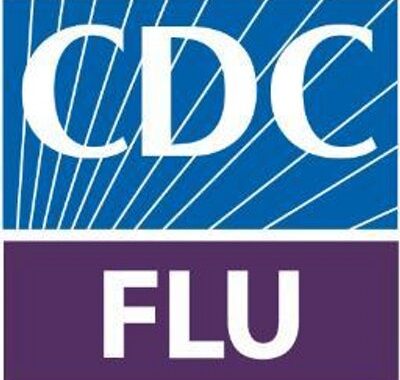Chemical cleaners on the market to remove and clean biofilm from dental unit waterlines (DUWLs)…
The Use of Surface Disinfectants in Dentistry
Surface Disinfection is the process that eliminates, inactivates, or destroys pathogens on a surface or item to the point where the surface or item is no longer capable of transmitting infectious pathogens, thereby rendering the surface or item safe for handling, use, or disposal. Proper surface disinfection, preceded by a cleaning step, is essential for preventing the transmission of pathogens to patients and health care workers. In dentistry, clinical surfaces are generally disinfected by liquid chemicals, following strict directions for use.
Cleaning is the removal of visible soil (e.g., organic and inorganic material) from objects and surfaces and normally is accomplished manually or mechanically using water with detergents or enzymatic products. Thorough cleaning is essential before surface disinfection because inorganic and organic materials that remain on the surfaces can interfere with a disinfectant’s effectiveness.
Federal EPA
The Federal Environmental Protection Agency (EPA) is directed to protect human health and the environment by regulating pesticide sales and use in the United States. The term “pesticide” is broad, encompassing any chemical intended to destroy pests, control their activity, or prevent them from causing damage. Pesticides used in dentistry are antimicrobials, such as surface disinfectants, sanitizers, and dental unit waterline cleaners, designed to destroy or inactivate disease-producing bacteria and other microorganisms.
Pesticide/antimicrobial manufacturers and/or distributors must submit scientific data that documents a product’s effectiveness and the potential health and environmental effects. Before registration, EPA scientific and technical personnel review the data on the product to ensure it is properly labeled and will not cause adverse effects to human health and/or the environment. The EPA-approved labels, which include technical and safety information, specify indications for use (contact time, application methods) and provide approved efficacy claims.
Disinfectant Efficacy
It is against Federal Law to make statements about a product’s efficacy that is not supported by specific registered label efficacy claims. EPA requires all disinfectant products legally sold in the U.S. to provide valid efficacy data for each specific microorganism claim on the label.
Surface disinfectants used in dentistry should be hospital disinfectants, i.e. those with proven efficacy against Salmonella choleraesuis, Staphylococcus aureus, and Pseudomonas aeruginosa. Additionally, the Centers for Disease Control and Prevention (CDC) recommends, and Federal OSHA requires, surface disinfectants to be efficacious against either HIV and HBV, or TB.
Since only claims that are listed on the registered label can be made for a disinfectant’s efficacy, for a disinfectant chosen for use in a dental office, it is important to check the label for efficacy against HBV, HCV, and HIV, as these are the bloodborne pathogens of concern in dentistry.
Disinfectant Safety
One factor commonly overlooked in choosing a surface disinfectant is the overall safety of the product to the environment and to staff members who are exposed to it daily over many years. Stronger, i.e. more toxic, disinfectants are not necessarily better. If “stronger” were the selection criteria for surface disinfectants, then sterilants, the “strongest” known chemical agents, would be indicated for use as surface disinfectants.
Stronger often means more hazardous to dental personnel. In some cases, the danger to staff members may be greater from the exposure to toxic disinfectants than any potentially infectious diseases. “Stronger is better” is neither used for prescribing pain medication nor other prescription drugs. The appropriate pain medication or therapeutic drug indicated is the compound that is specific to the medical requirement with the least hazardous side effect.
Many disinfectants contain organic solvents such as alcohols and/or phenols, which vaporize readily, greatly affecting indoor air quality for the users and patients. Most organic solvents are flammable, and thus cannot be discharged down the drain, but must be collected and disposed as hazardous waste.
Extreme pH is another potential hazard of liquid disinfectants. Many disinfectants are corrosive, having a low pH (0-3) or a high pH (11-14). Corrosive materials are more hazardous to personnel and equipment.
Clean first… and then disinfect!
According to CDC’s Guidelines for Infection Control in Dental Health–Care Settings – 2003, “cleaning should precede all disinfection and sterilization processes; it should involve removal of debris as well as organic and inorganic contamination.” Before surface disinfection can be effective, surfaces must first be cleaned of debris because surfaces cannot be adequately covered with disinfecting solution if debris remain on the surface. If oral debris is not removed prior to sterilization, “it will interfere with microbial inactivation and can compromise the disinfection or sterilization process.”
Many disinfectants are not effective cleaners and require a pre-cleaning step commonly ignored in dental offices, as disinfection has been promoted, as “all that is necessary”. It is important to always read the label on a disinfectant bottle to determine whether a separate cleaning product is needed. A two-step procedure must always be followed, whether using one product or two: CLEAN, AND THEN DISINFECT.
Regarding the use of alcohols as surface disinfectants, the Organization for Safety, Asepsis and Prevention (OSAP) states that “because alcohols are poor cleaners and evaporate rapidly, they may not be the best choice for use on environmental surfaces”.
Summary
In summary, there are many choices for disinfection of dental surfaces, all with unique advantages and disadvantages.
- Specific pathogenic testing should be done for each disinfectant claim as required by federal law, rather than relying upon a general assumption that efficacy against one organism demonstrates effectiveness against all other potential pathogens.
- The least toxic disinfectant for the specific target pathogen should be used to ensure occupational and environmental safety.
- The compound should include a cleaning agent to ensure that blood, body fluids, or debris do not inhibit or negate the product’s effectiveness.



